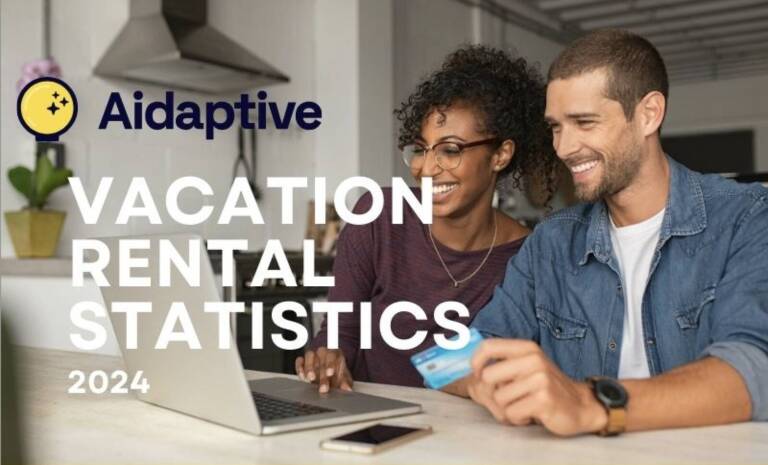With online retail revenue predicted to hit $1.14 trillion this year and consumers expected to spend even more in 2024, the sky is the limit for ecommerce companies.
Unfortunately, while there is an expanse of opportunity out there, continued privacy changes are making life more difficult for ecommerce marketers.
Just this year alone, we saw Apple removing link tracking click IDs, Google transitioning fully to GA4, and Meta killing more audience targeting options.
In 2024 we shouldn’t expect that to slow down. Chrome cookie deprecation starts in Q1 2024, Google and Yahoo email spam filters will clamp down Feb 1, 2024, and Meta is rolling out their ad-free Facebook in the EU.
The data we rely on to make informed decisions about our businesses is becoming complicated and, in some cases, obsolete.
There is hope, though. While technology taketh away, technology also giveth. That’s where website visitor identification comes in.
Understanding Website Visitor Identification
Data powers everything we do as marketers.
But as mentioned above, privacy changes are resulting in less and less data. We are losing cookie data, we are losing cross-channel tracking capabilities, and link clicks are being lost. On top of it, we don’t know who is visiting our site.
Did you know that 97% of website visitors often remain anonymous?
How can we use visitor data if we don’t have it? How can we grow our business and improve our marketing if we don’t know who to market to?
This is where website visitor identification steals the show. Website visitor identification (WVI) takes anonymous site visitors and turns them into identifiable contacts. When someone lands on your site, website visitor identification tools tell you who they are – providing information like name, email, phone number, and browsing behavior.
Suddenly, we have visitor data to work with!
Optimizing Your Ecommerce Site with Visitor Data
Visitor data helps ecommerce site owners unlock insights into user behavior and customer preferences, resulting in optimized sites, better UX, targeted marketing strategies, and more sales.
Let’s dig into three ways website visitor information can help optimize your ecommerce site.
- Improve Cart Abandonment Rates
Did you know the average cart abandonment rate is ~69%? That means 7 out of 10 people who get to your shopping cart leave. Without a form filled, we don’t have their email or the ability to market to them.
Until now.
Website visitor identification platforms can tell you who that person is, even if they didn’t give you an email.
Now, you can start tracking user interactions in real-time and create targeted follow-up campaigns. Use the data to personalize your outreach efforts. For example, if they were looking at a particular shirt, create a remarketing campaign with that particular shirt. The more personalized your outreach, the more successful you will be.
Website visitor identification can also give you insights into buying behavior and help you better understand why and when users abandon their carts.
Ultimately, the goal of improving cart abandonment rates with website visitor data is to recover lost revenue. By using the data to run retargeting ads or send personalized email outreach, you increase your chances of re-engaging users and increase your chances of driving sales.
- Build Targeted Marketing Campaigns
Targeted marketing campaigns become more effective when you have data about the target. You need to have the right target, the right message, and the right medium.
With website visitor information, ecommerce stores can build actual targeted marketing campaigns and reach actual customers.
Website visitor identification helps you identify who people are, but the real value comes in tracking what they are interested in. By only identifying users on specific pages or products, you can hone in on who your high-value customers are.
Going back to our example earlier, you may not want to track every person who lands on the T-Shirts page. That’s too broad and doesn’t give you much information about the intent. Instead, track the people who reach a particular shirt. Maybe it’s your most popular seller or the shirt that has the highest margin.
By narrowing down the scope, you can build better segments and identify customers who are more likely to buy.
It also allows you to deliver more effective content, whether through email campaigns, retargeting ads, or even site pop-ups.
Targeted content isn’t targeted if it only slightly touches on my interest. Segments allow you to go deeper and build messaging that resonates with your customers.
- Build & Grow Retargeting Lists
If you have run Facebook or Google retargeting ads over the past few years, you know that audiences have gotten smaller and performance has continued to decline.
Part of this has to do with the privacy changes we mentioned above. When iOS 14 launched in 2020, we saw our ad audiences take a huge hit and that has only gotten worse. According to recent stats, only 34% of iOS users are opted in to ATT.
If we can’t track people, we can’t remarket to them.
Thankfully, this is where website visitor identification gives ecommerce marketers a huge advantage!
When collecting emails from people who visit your website, you really don’t want just blindly to reach out to them. Yes, as we mentioned before, you might want to reach out to those really high-value, ready-to-purchase customers, but everyone? Probably a bad idea.
This is what ad retargeting is made for. Take the emails from the more generic, top-of-the-funnel pages and put them into your remarketing lists. This will allow you to grow those lists and make your retargeting campaigns hum like it’s 2019 again!
Start Improving Ecommerce Site Performance
Website visitor information is a powerhouse for ecommerce sites looking to dominate the digital space.
Whether it’s improving cart abandonment rates, creating targeted marketing campaigns, or growing your retargeting lists, the applications of website visitor identification are diverse and powerful.
As the ecommerce landscape continues to evolve, and privacy updates continue to roll out, staying ahead requires a data-driven and user-centric approach. Website visitor identification is the key to understanding visitor behavior and helping ecommerce marketers adapt to what’s next.
Click here to get the first 500 contacts free with Customers.ai.
Author Bio:
Larry Kim is the CEO of Customers.AI, a full-funnel marketing performance solution with


